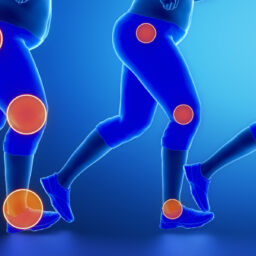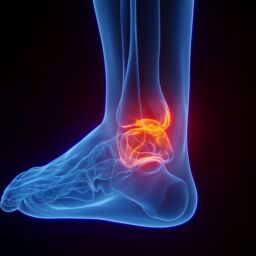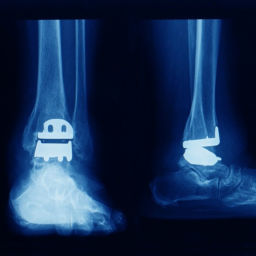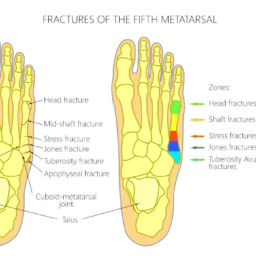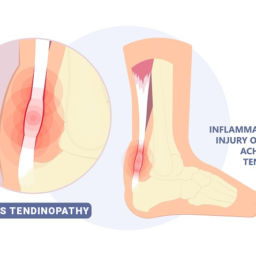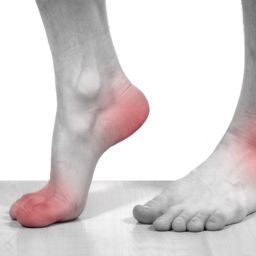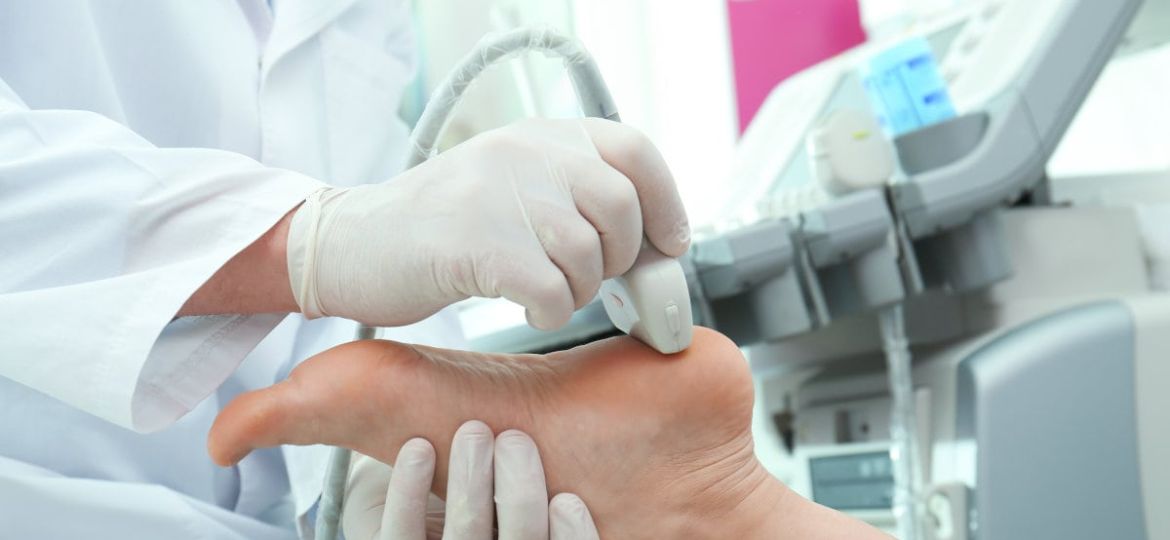
When it comes to foot pain or discomfort, many people might not immediately think of ultrasound as a diagnostic tool. However, in the world of podiatry, Musculoskeletal Ultrasound is emerging as a valuable technology that offers a non-invasive and detailed look into the structures of the feet. Let’s explore how this innovative approach is revolutionizing the way podiatrists diagnose and treat various foot conditions.
Musculoskeletal Ultrasound is a medical imaging technique that uses sound waves to create images of muscles, tendons, ligaments, and joints within the body. In the podiatry office, this technology provides a dynamic view of the foot’s internal structures, enabling podiatrists to identify and understand issues that may not be apparent through traditional methods.
Accurate Diagnosis
Musculoskeletal ultrasound offers real-time imaging, allowing us to visualize soft tissues, tendons, ligaments, and joints with remarkable clarity. This technology aids in accurate and timely diagnosis, enabling a more precise understanding of conditions such as plantar fasciitis, Achilles tendonitis, and ligament injuries.
One significant advantage of ultrasound is its non-invasiveness. Unlike traditional imaging methods such as X-rays or CT scans, which involve ionizing radiation, ultrasound relies on harmless sound waves. This makes it a safer option, especially for those who may need frequent imaging, such as athletes or individuals managing chronic foot conditions.
Treatment Planning And Guidance
For patients seeking answers to persistent foot pain, ultrasound can be a game-changer. It allows podiatrists to visualize soft tissues in real-time, providing insights into conditions like plantar fasciitis, tendonitis, and ligament injuries. By examining the foot’s anatomy dynamically, podiatrists can make more accurate diagnoses, leading to better-informed treatment plans.
Another notable application of ultrasound in podiatry is its effectiveness in guiding injections. For conditions requiring therapeutic injections, such as corticosteroids for inflammation, ultrasound helps podiatrists precisely target the affected area. This not only enhances the efficacy of the treatment but also minimizes the risk of complications.
In the past, diagnosing certain foot conditions might have required more invasive procedures or exploratory surgeries. Musculoskeletal Ultrasound, however, offers a less intrusive alternative. It enables podiatrists to visualize structures like the Achilles tendon, heel spurs, and neuromas without resorting to surgical intervention, allowing for a more conservative and patient-friendly approach.
Beyond diagnosis and treatment planning, ultrasound plays a crucial role in monitoring the progress of healing. Podiatrists can use ultrasound to track changes in soft tissue injuries over time, ensuring that the chosen treatment is effective and adjusting the approach as needed. This real-time feedback contributes to more personalized and responsive care for patients.
With ultrasound, we can not only diagnose but also guide injections and other procedures with precision. This targeted approach enhances the effectiveness of treatments, reduces the risk of complications, and promotes faster recovery for our patients.
Patient Education
Patients often appreciate the transparency and immediacy of Musculoskeletal Ultrasound. Being able to see the images of their own feet and the specific areas of concern helps them better understand their condition. This visual aid can empower individuals to actively participate in their treatment plan and make informed decisions about their foot health. The visual nature of ultrasound makes it an excellent tool for patient education. By sharing real-time images during consultations, we can help patients better understand their conditions and actively engage them in their treatment plans. This promotes a collaborative approach to healthcare.
While Musculoskeletal Ultrasound has proven valuable in various podiatric scenarios, it is essential to note that its effectiveness relies on the skill and expertise of the podiatrist performing the examination. Proper training ensures accurate image interpretation and enhances the overall diagnostic process. Therefore, patients should seek out podiatrists with experience in utilizing ultrasound for foot-related concerns.
In conclusion, Musculoskeletal Ultrasound is transforming the landscape of podiatric care. By offering a non-invasive, real-time look into the intricate structures of the feet, this technology provides a comprehensive understanding of various foot conditions. From diagnosis to treatment planning and monitoring, ultrasound empowers both podiatrists and patients on the journey to optimal foot health. As this technology continues to evolve, it is poised to become an indispensable tool in the podiatrist’s office, shaping a future where foot pain is diagnosed and treated with unprecedented precision.
At Certified Foot and Ankle Specialists, we continue to explore innovative approaches, ensuring that each step we take leads to healthier, happier feet and improved quality of life for all.
Contact Us at any of our local clinical foot care locations for more information.


